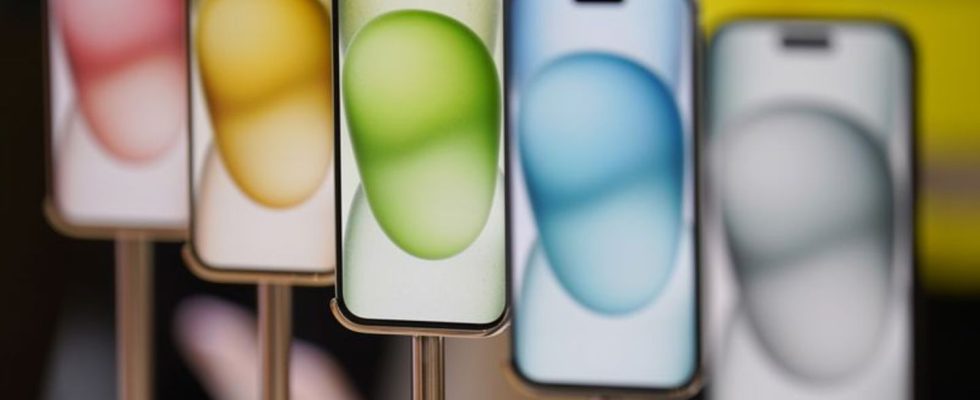telecommunications
iPhones: Apple allows old components for repairs
The used spare parts should generally be able to be used from the iPhone 15 onwards. photo
© Jonathan Brady/PA/dpa
In the future, Apple’s iPhones will recognize when someone uses a component from a stolen device during repairs. This is accompanied by an innovation that makes it cheaper to repair iPhones.
Apple will soon allow the use of components from used devices for iPhone repairs. Become there iPhones can detect when someone tries to use a part from a stolen or lost phone, Apple top manager John Ternus told the German Press Agency. iPhones will also be able to be repaired with spare parts from other manufacturers, such as displays or batteries.
With the innovation, you will be able to use old devices, for example, cameras and the biometric modules for FaceID facial recognition or the fingerprint sensor for TouchID for repairs.
iPhone construction process changed
Apple had to change how iPhones are designed and built, said Ternus, who is responsible for hardware development at the company. When assembling the devices, the components go through a calibration process. Essentially, the optimal parameters for the operation of this specific part are determined. iPhones will now access this data stored in the cloud during repairs if they detect an original part that has already been installed and calibrated.
The used spare parts should generally be able to be used from the iPhone 15 onwards; with the biometric modules, this will only be possible with the next iPhone generation in autumn. So far, Apple only allows sensors to be linked to the main processor once – for security reasons, as Ternus emphasized. In general, one can assume that the used components will only be interchangeable within one generation and model series. “So much changes from generation to generation that it’s unlikely they’ll fit in.”
In recent years, Apple has repeatedly been criticized by advocates of making devices easier to repair. Ternus defended the group’s approach: You have to make sure that everything works and is safe – and users have to have transparency about which components are in their technology. If a part is detected from an iPhone that has been reported stolen or lost, there will be a warning.
Apple defends itself against criticism
Basically, repairability is not the ultimate goal, but rather long-lasting devices, said Ternus. Repairs are a very important factor for this. “But if you only focus on the fact that everything has to be repairable, you will make decisions that end up being bad for users and the environment,” he emphasized. “An unreliable device that can be easily repaired is inherently worse than one that doesn’t need to be repaired at all.”
An example would be to avoid using adhesives when assembling the devices and only use screws instead. On the one hand, adhesives are good for joining components together to save space. On the other hand, they are a good way to make the devices waterproof. You could also build a cell phone that could be opened with three screws – but it would be vulnerable to water damage, Ternus said. “And that would be fundamentally worse because phones would fail every day and pile up as electrical waste.”
The trend towards chip systems that take on more and more functions on one plate that were once distributed across several components such as graphics cards or memory modules is also ultimately good for sustainability, argued Ternus. On the one hand, the connections between individual components used to be prone to problems. On the other hand, the new chip systems are more efficient in terms of power consumption and also require fewer resources in production. This more than compensates for the fact that sometimes if one part of the chip fails, the rest also has to be thrown away.

